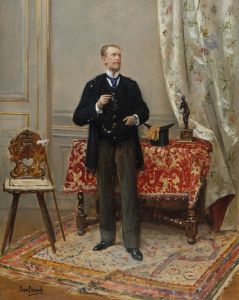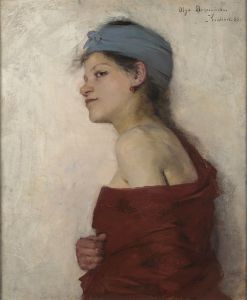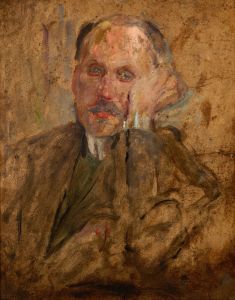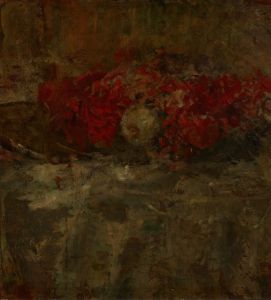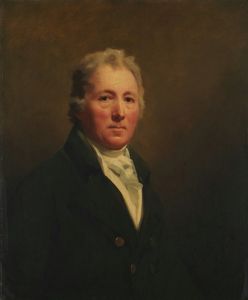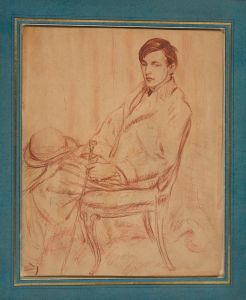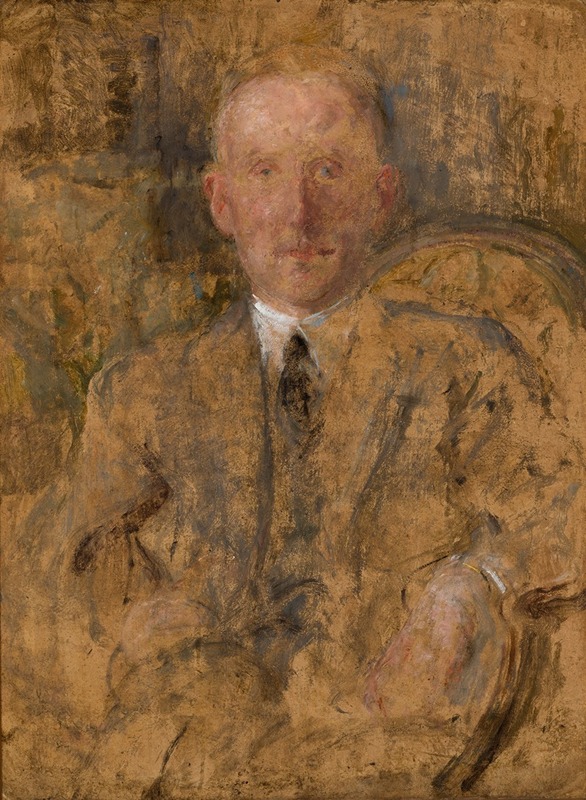
Portrait of Emeryk Hutten-Czapski
A hand-painted replica of Olga Boznanska’s masterpiece Portrait of Emeryk Hutten-Czapski, meticulously crafted by professional artists to capture the true essence of the original. Each piece is created with museum-quality canvas and rare mineral pigments, carefully painted by experienced artists with delicate brushstrokes and rich, layered colors to perfectly recreate the texture of the original artwork. Unlike machine-printed reproductions, this hand-painted version brings the painting to life, infused with the artist’s emotions and skill in every stroke. Whether for personal collection or home decoration, it instantly elevates the artistic atmosphere of any space.
"Portrait of Emeryk Hutten-Czapski" is a painting by the renowned Polish artist Olga Boznańska, known for her distinctive style and contribution to portraiture in the late 19th and early 20th centuries. Boznańska, born in 1865 in Kraków, was a prominent figure in the art world, celebrated for her ability to capture the psychological depth and character of her subjects.
The painting depicts Emeryk Hutten-Czapski, a notable Polish nobleman and collector, who was part of the influential Czapski family. The Czapski family was well-known for their contributions to Polish culture and society, and Emeryk himself was a distinguished figure, particularly recognized for his extensive collection of coins, medals, and other historical artifacts. His collection later became the foundation of the Emeryk Hutten-Czapski Museum in Kraków, which is now part of the National Museum in Kraków.
Olga Boznańska's portrait of Emeryk Hutten-Czapski is a testament to her skill in capturing the essence of her subjects. Her work is characterized by a subtle use of color and light, often employing a muted palette that emphasizes the emotional and psychological presence of the sitter. In this portrait, Boznańska's technique is evident in the delicate rendering of Czapski's features and the thoughtful expression on his face, which suggests a man of intellect and contemplation.
Boznańska's approach to portraiture was influenced by both the Impressionist movement and the Symbolist movement, which can be seen in her emphasis on mood and atmosphere over strict realism. Her portraits often convey a sense of introspection and depth, inviting viewers to engage with the inner world of the subject. This is particularly true in the "Portrait of Emeryk Hutten-Czapski," where the interplay of light and shadow adds to the contemplative mood of the piece.
The painting is an example of Boznańska's mature style, which she developed during her years in Paris, where she moved in 1898. In Paris, she became part of the vibrant artistic community and gained recognition for her work, exhibiting at prestigious venues such as the Société Nationale des Beaux-Arts. Her reputation as a portraitist grew, and she received numerous commissions from both Polish and international patrons.
"Portrait of Emeryk Hutten-Czapski" reflects Boznańska's ability to transcend the traditional boundaries of portraiture, creating works that are both personal and universal. Her portraits are not merely representations of physical likeness but are explorations of character and emotion, capturing the essence of the individual in a way that resonates with viewers.
The painting is part of the collection at the National Museum in Kraków, where it continues to be appreciated by art enthusiasts and scholars alike. It stands as a significant example of Olga Boznańska's contribution to the art of portraiture and her role in the cultural heritage of Poland. Through her work, Boznańska has left a lasting legacy, influencing future generations of artists and ensuring her place in the history of art.






